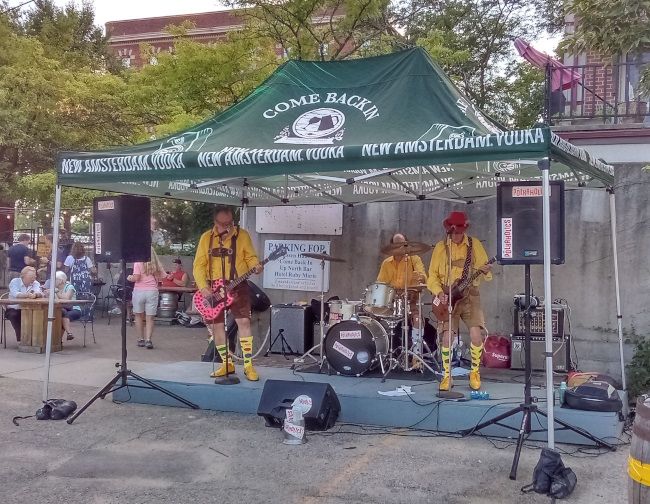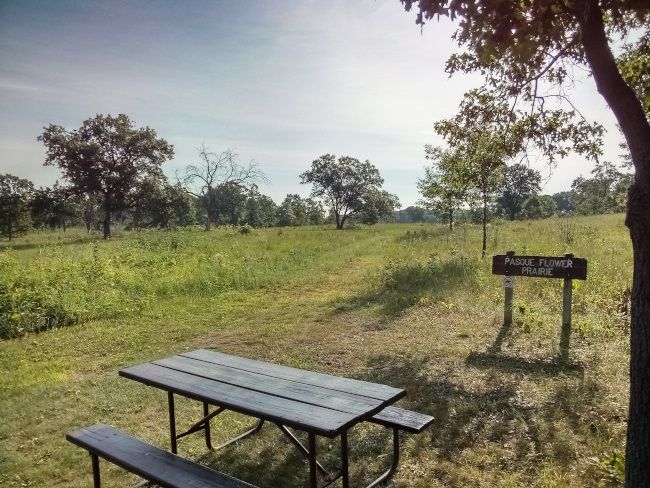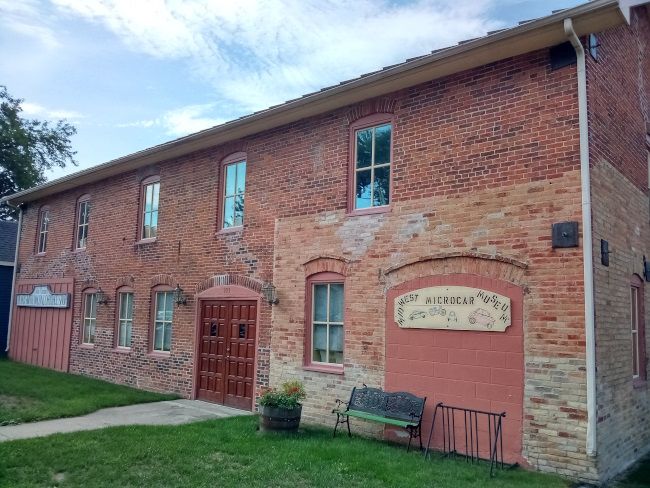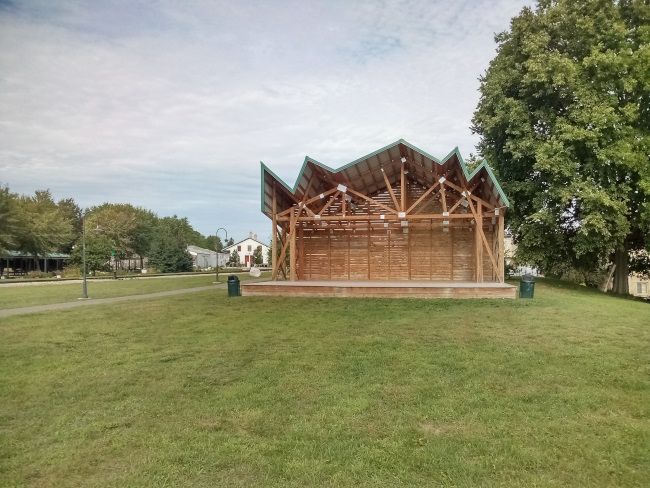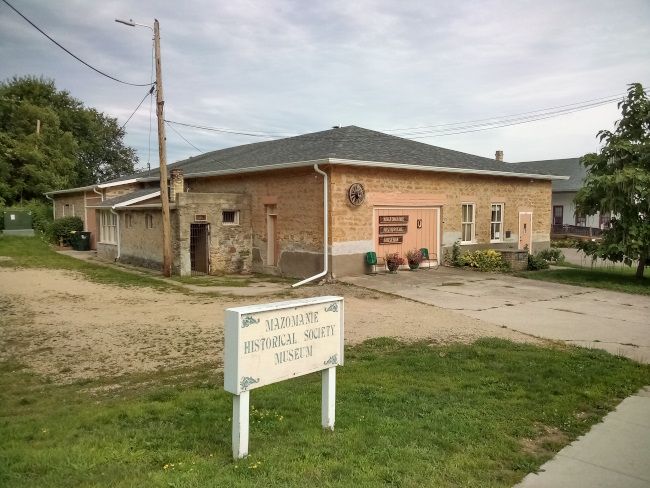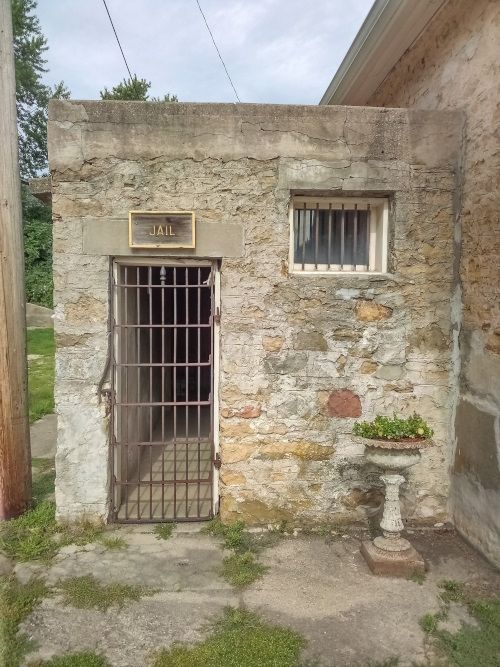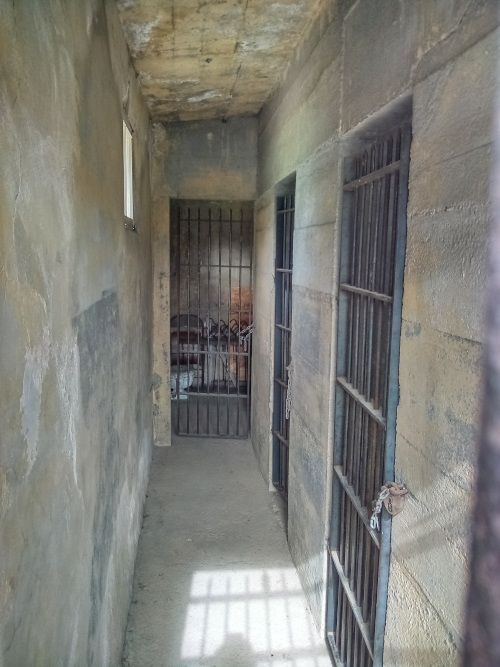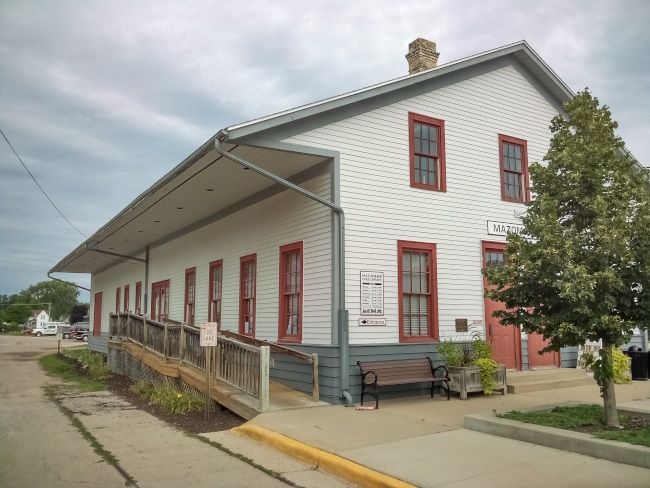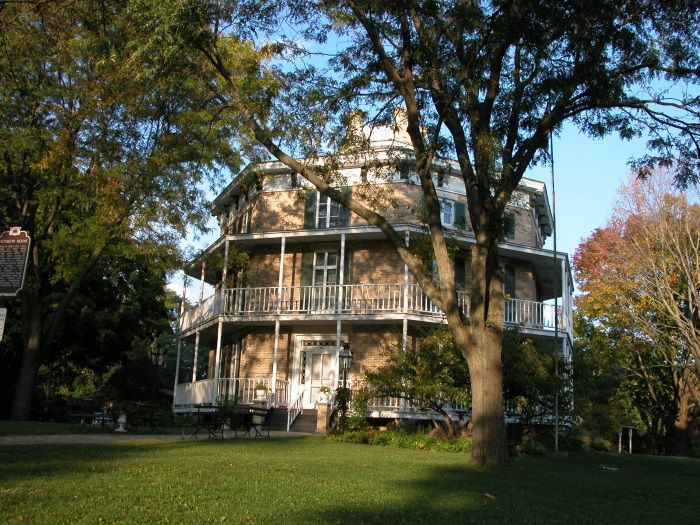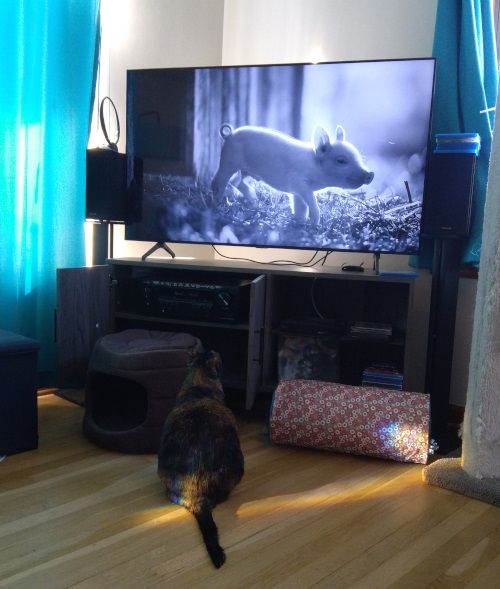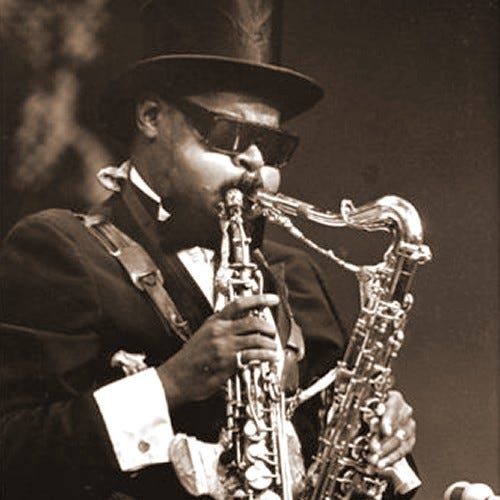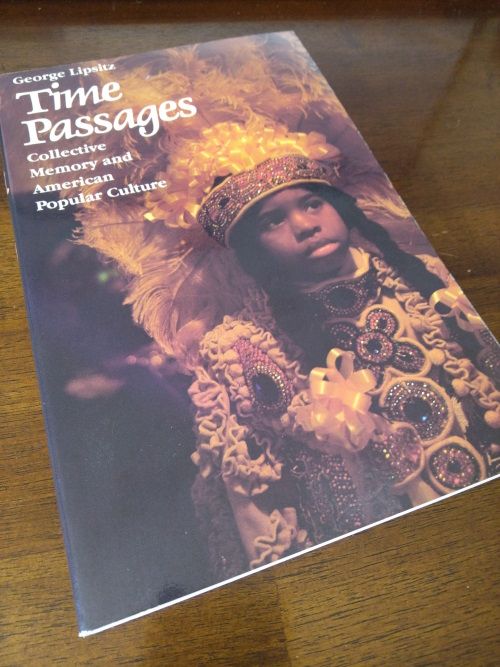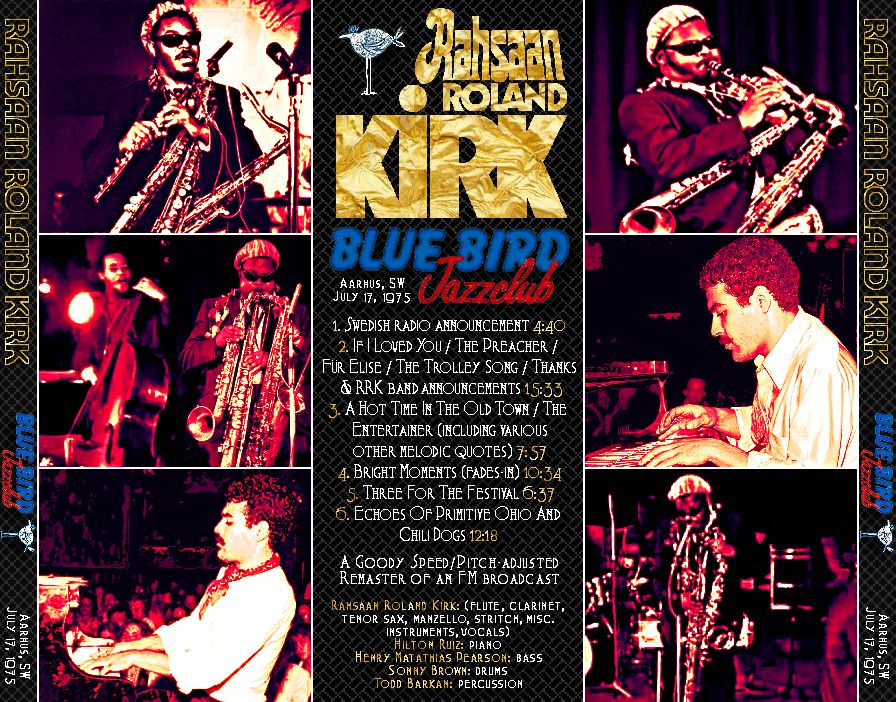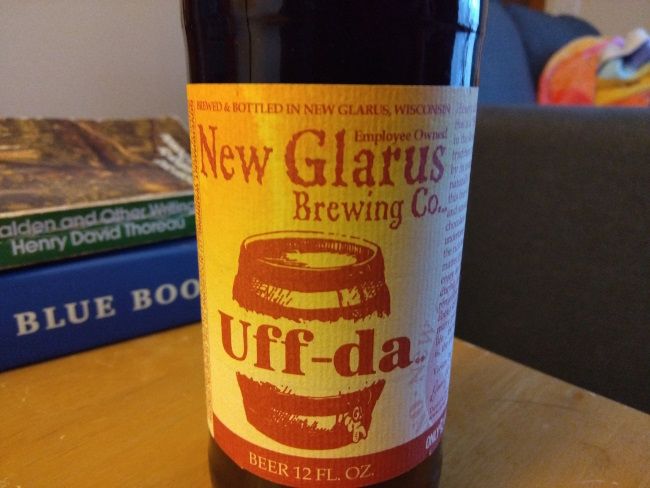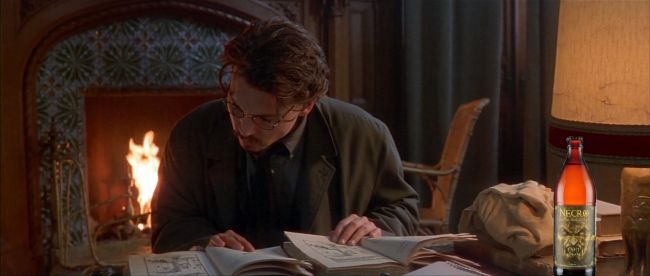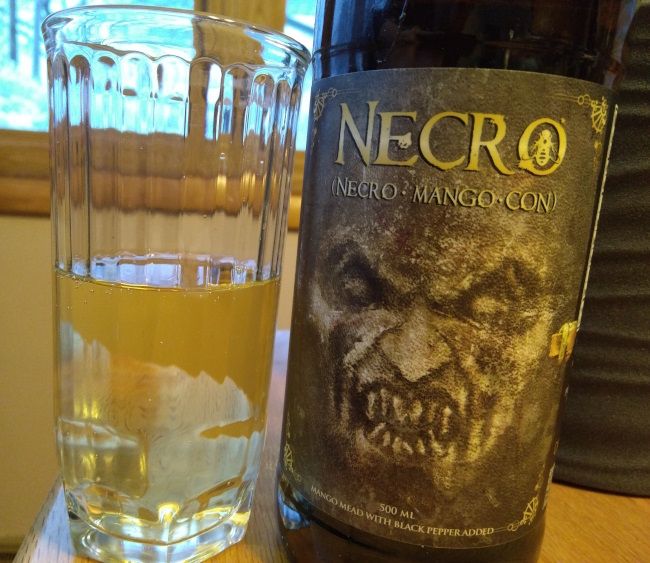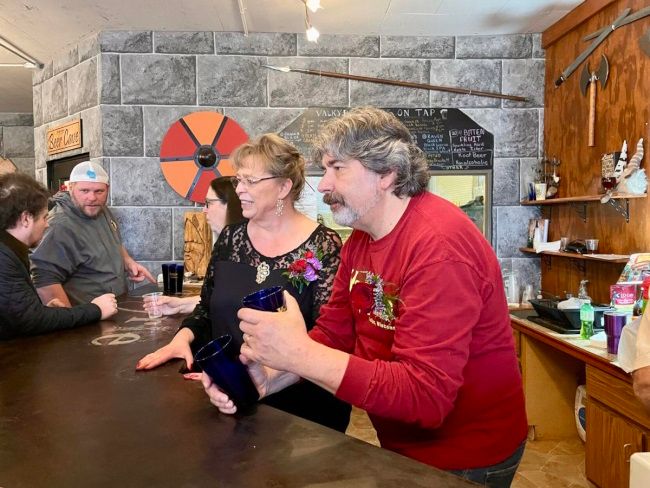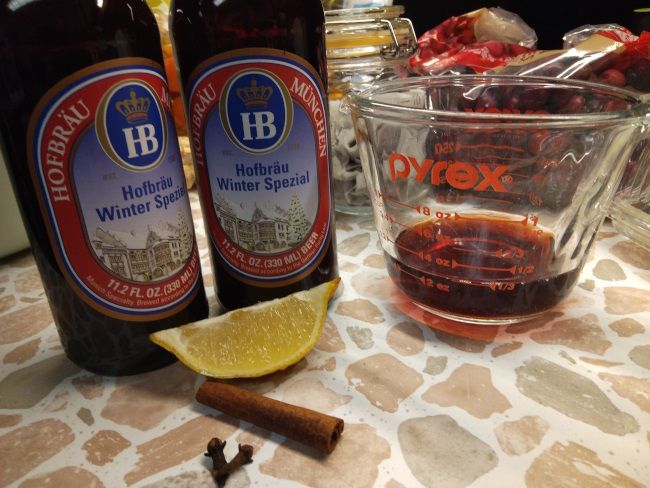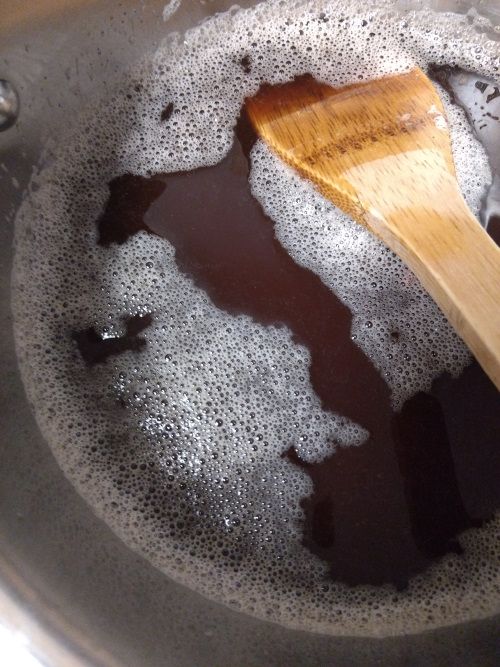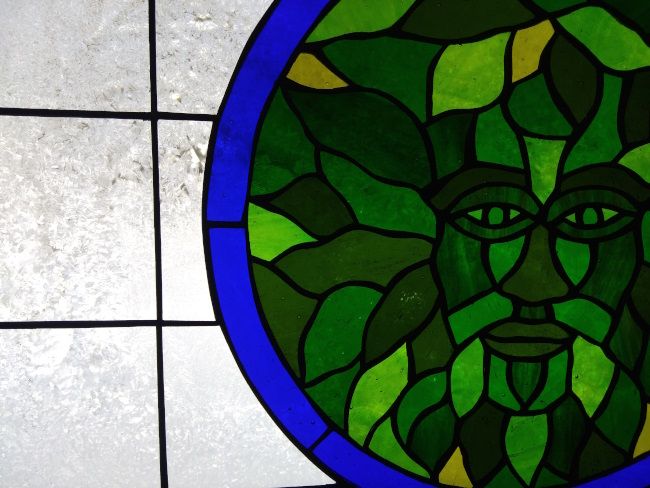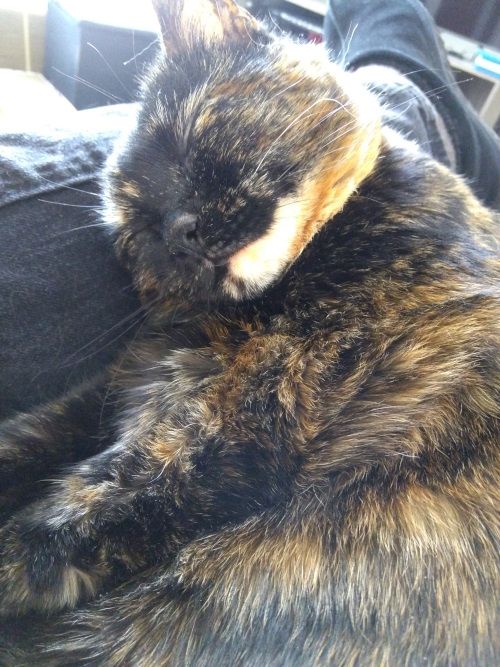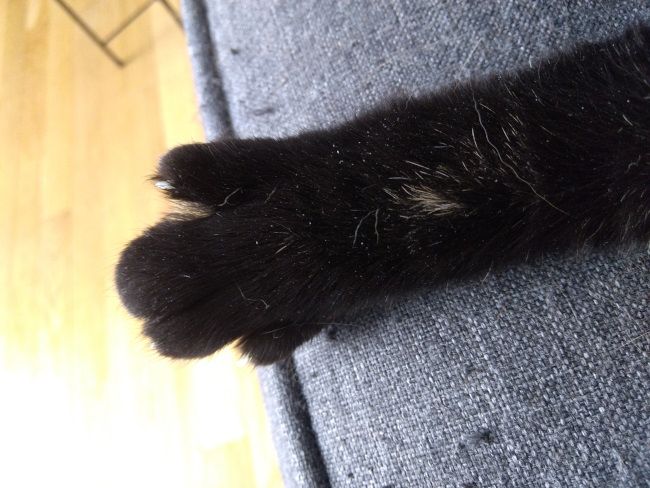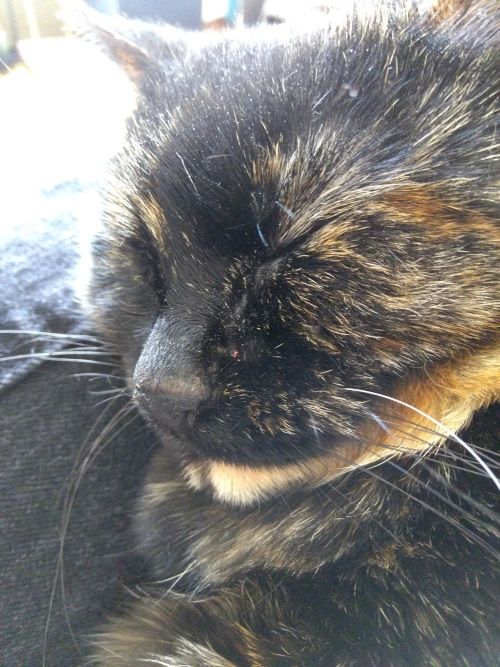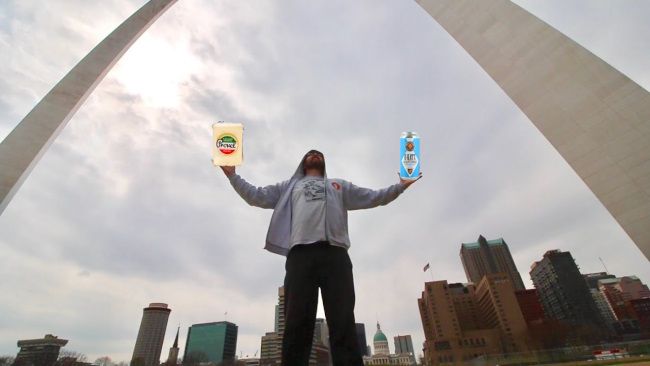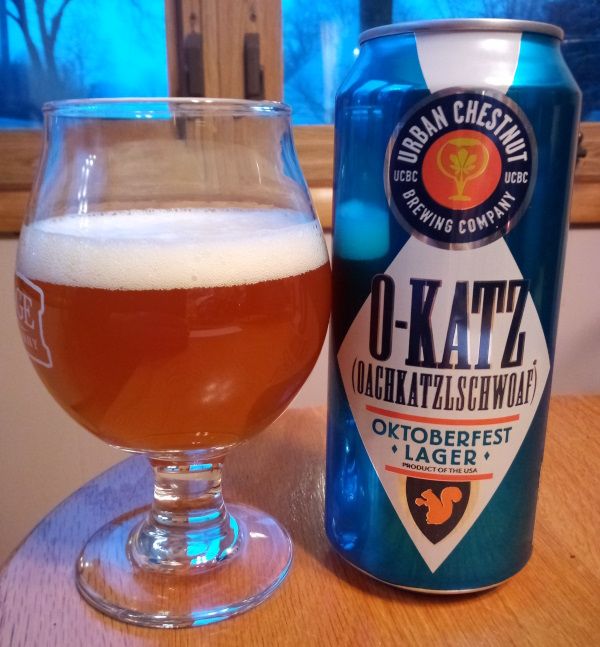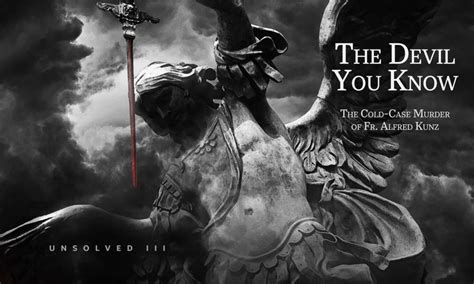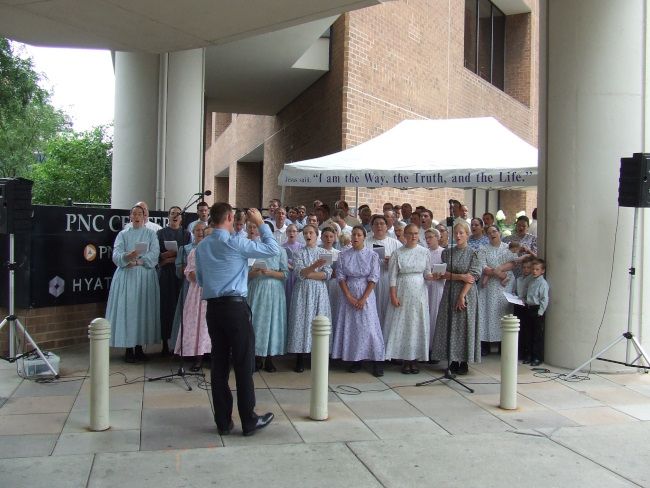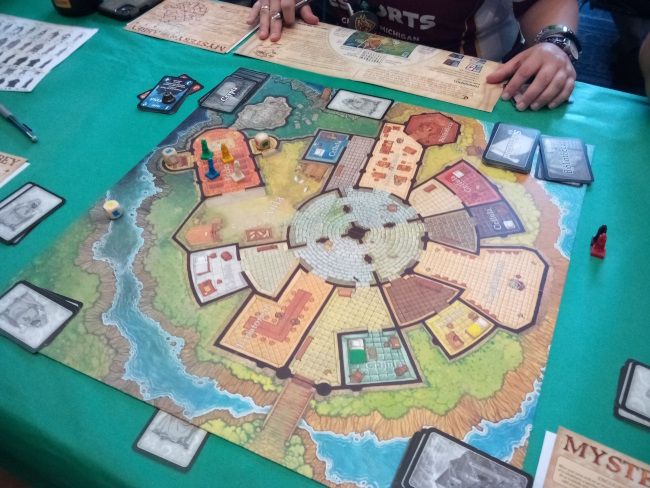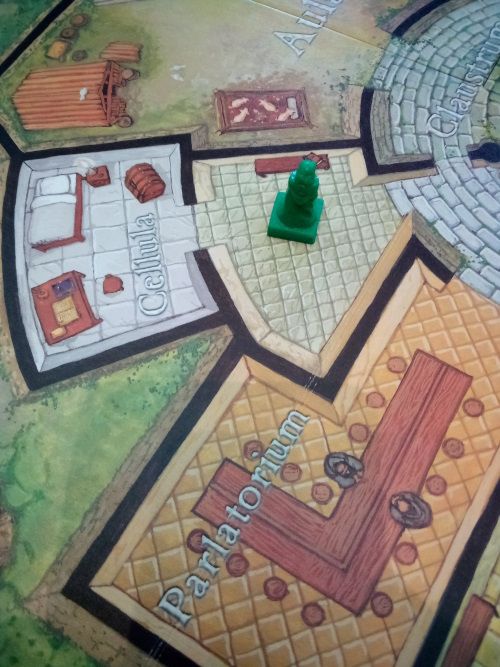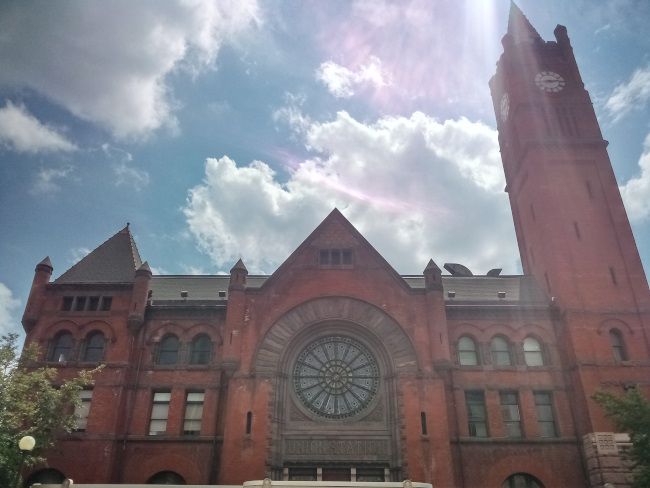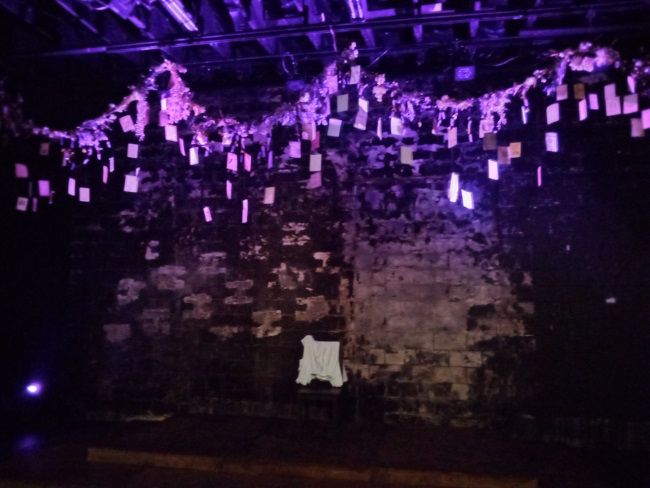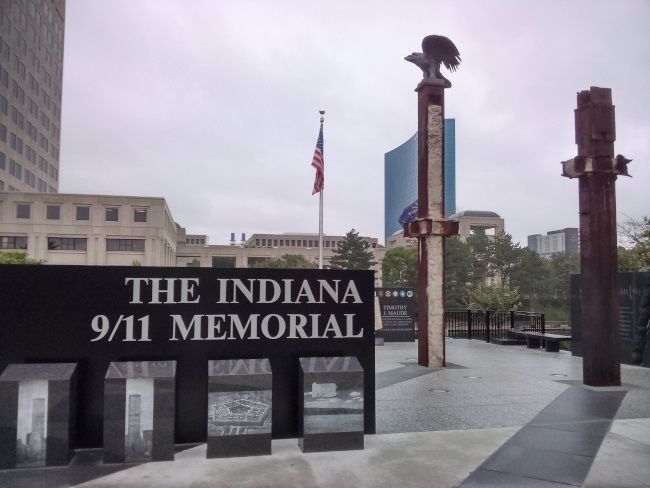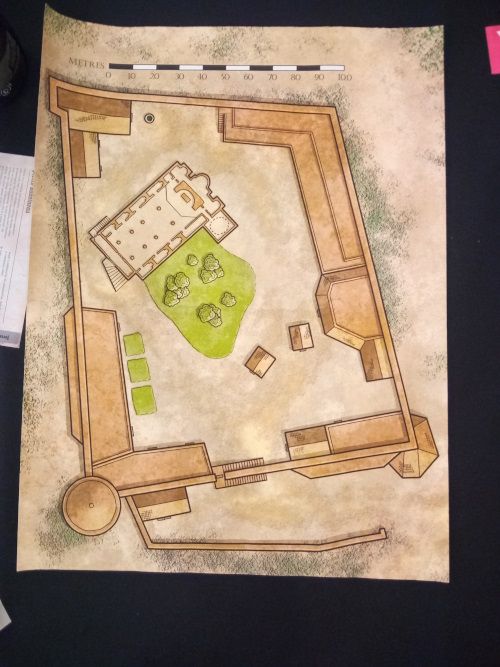(Read entry #104.)
29 January, 2024
24 January, 2024
The Old Man’s Hut
Last week I finally gave the newest Chinese restaurant in Monona a try, La Choza Del Viejo.
The name means “the old man’s hut” in Spanish. While a Chinese restaurant with a Spanish name is more than a little odd, it's exactly this kind of incongruity that adds color to an increasingly bland, cookie cutter area. The owner and chef is one Evelio Castillo, which explains the name.
I neglected to take any photos of the food but nothing tasted like it came from Sysco. The teriyaki beef was tender, if perhaps a bit oversweet; the hot & sour soup was great - not particularly viscous and with a nice black pepper accent; and the egg foo young was rather light & fluffy and not too greasy with a nice fresh oil flavor.
Service was friendly and swift. Highly recommended.
22 January, 2024
The Corona Diaries Vol. 104: Mazomanie Needs a Coffeehouse
(mid-August 2023)
(Dance to the prelude.)
A few days ago thirsty beer geeks from around the country descended upon Madison for the Great Taste of the Midwest, the best beer festival in all the land. Although I didn’t attend, I did go to the Essen Haus, a German restaurant, the evening before as The Polkaholics, Chicago’s renowned polka-rock band, were playing.
As usual, they put the crowd to shame with their haberdashery as they were dressed in the finest Lederhosen complemented by the sexiest socks of any band, polka or otherwise. I had my Polkaholics t-shirt on and Dandy Don, the guitarist/singer, spotted me right away in my stylish outfit. I’d made a music mix for the road trip to Gencon which featured a couple Polkaholics tunes and I was hoping to hear them live. I found that “Paul Konrad Polka”, a tribute to the WGN weatherman in Chicago, was already on the setlist and so I requested the other song, “Sound (of the Beer) Garden Polka”. This one is a musical chimera worthy of Victor Frankenstein himself which fuses the alternative rock of 90's stalwarts Soundgarden with a steady 1-2 polka beat to great melodic (and humorous) effect.
When the sun is a black hole
The beer will be ice cold
Classic stuff. Ooh! And they had a new album out too – Say Yes to Oktoberfest. It is a Dionysian ditty, a concept album, of sorts, about beer, drinking, and Oktoberfest revelry. You bet I bought the CD.
I ran into a fellow whom I knew via Twitter and had met in-person a couple of times. We chatted about craft beer, camping, the sorry state of Twitter, and whatever else came to mind. It was nice to see him again and to meet his wife whose existence I’d learned of online but had never encountered in real life.
********
A few (or is it several?) entries ago, I wrote about walking around Morton Woods. I’d randomly chosen it as a destination for a hike after looking at a map of county parks. Now, if I hadn’t gone there, I would have instead headed to Walking Iron County Park, just north of Mazomanie which is 25 miles west of Madison. A full week of work after spending 5 days down in Indianapolis on vacation at Gencon was sheer hell so, when the weekend finally rolled around, I needed a hike out in nature and headed west to Walking Iron.
For the drive there, I traveled much the same route as I did going out to Morton Woods. Taking the back roads meant I would not feel compelled to drive 55+ and instead cruise along at 35-40 so I could enjoy the scenery from the tops of the many rolling hills out in the Driftless Area.
One advantage of a nice, leisurely pace is that, if I spot a deer in a field, I can actually pull over to take a photograph rather easily as I did on this occasion.
I drove through a little of Black Earth before turning onto another scenic county road which would take me to Mazomanie. Mazo isn’t very large and, before long, I was outside of town and at the park. It was a lovely, sunny morning.
The initial section of the trail ran along the edge of some woods on one side with prairie on the other.
There was birdsong coming from all sides – it was avian surround sound. I would occasionally catch a glimpse of the tiny members of the chorus but that was about it. There were many calls and songs that were completely unfamiliar to me. This shouldn’t be surprising, though, as I only know the basic city slicker repertoire – robins, cardinals, and red-winged black birds. Oh, and red-bellied woodpecker too.
At one point, I came to a spot with some pine trees which scented the air quite nicely.
Soon I came upon a trail that led off into the woods.
Despite knowing this is exactly the kind of thing that got Hansel & Gretel into trouble, I followed the path into the trees where I discovered that it wended its way down to a creek and ran along side it for a stretch.
The trail through the trees was pleasantly cool but all-too short and soon enough I was back on the path that straddled woods and prairie.
Some parts of the trail straddled farm fields.
The scent on these stretches was all fresh & verdant, to start, and I took in the air thinking to myself how wonderful the countryside is. As I traipsed further along, however, that other scent of the countryside began to creep in: manure. Now, I can handle cow manure just fine. (Chicken shit is a whole different matter, though.) But then the noxious smell of chemical fertilizer kicked in and the combination was really quite bad. I hastened onwards to escape the miasma.
Towards the end of my hike, I found myself at the Pasque Flower Prairie where birds were zipping around from ground to tree, tree to tree - just everywhere.
They wisely kept a good distance between themselves and the human so I wasn’t able to get a decent photograph. However, I was able to see that many of them were blue on top, though they had white or tan bellies.
These weren’t blue jays and the only other bird of that hue that I know of in these parts is the indigo bunting but I thought they were of a deeper blue color and were completely blue, belly and all. After consulting that handy Birds of Wisconsin, my best guess is that they were Eastern Bluebirds.
The walk being done, I headed into Mazomanie for something to eat as I was famished. And maybe a refill on my coffee too.
I hadn’t been there since 2002, when I accompanied the woman whom I was dating at that time to a dance studio in the old part of town. This was where Madison’s Cycropia Aerial Dance had a rehearsal space and my girlfriend was intent on spending some time hanging from ropes, spinning in circles, and learning a little about aerial dancing. Think Julianne Moore in The Big Lebowski but without the paintbrush.
In addition to not immediately finding a coffeehouse as I cruised into Mazo, I also didn't find anyone out and about. It was a bit spooky, as if I was in that episode of The Twilight Zone where the guy wanders around the town only to find it abandoned. I chose a parking spot largely based on its proximity to this neat ghost sign for what appears to have been a grocery store from back in the day.
Wandering around town on foot, I ran into an old blacksmith shop that was now home to the Midwest Micro Car Museum.
I don’t know if it is dedicated to those very small cars like the one Mr. Bean drives or just a very large collection of Matchboxes.
An area where rail tracks ran through town was rather neat. The old freight and coal buildings still stood but, in the field abutting them was a bandshell.
And across the remaining track was a promenade.
The old feed mill was now a fancy restaurant while various other buildings that would have served the trains and/or passengers had been converted into stores along with covered seating areas for music and other festivities.
From the remaining buildings and the layout of the area by the tracks, it seems that Mazo was something of a rail hub back in the day.
Continuing my walk, I discovered that the town’s historical museum was in an old electric power plant.
I am not sure when, but the building hosted a jail at some point. Perhaps it was the home of the local constabulary before becoming a power plant.
I guess things got a little rowdy back in the day.
The town library is housed in a former train depot which doesn't look to have changed much since the late 19th century.
Some of the old rails were still visible in the street and you could see how they ran through what is now that slick promenade.
Unfortunately, there was no source of coffee that was open downtown. I eventually saw 3 or 4 people but, otherwise, it was dead. And so I headed out towards the highway for a gas station where I got a breakfast sandwich and more coffee before heading for home.
********
Bonus photo. It’s the octagon house in Watertown. I cannot recall the name of it but it’s a historic site.
21 January, 2024
The pickle beer shortages continue
I ran into another empty pickle beer shelf yesterday. This time it was at Willy Street Coop North and it was the Destihl's Dill Pickle Sour Beer that was apparently sold right out.
At the movies with Piper
Piper and I watched Gunda today and she really got into it for a spell.
20 January, 2024
Classic Country Corner on WVMO
My pal Eric the Driftless Cowboy now has a radio show on WVMO called "Classic Country Corner". It airs at 8 A.M. on Saturdays. This morning is the in inaugural outing.
19 January, 2024
A Collective Memory Problem?
Back around 1997 or thereabouts, I ran into an essay by a gentleman named Judson Caswell called "Minstrel in the Gallery: History in the Music of Jethro Tull" that I believe he wrote for a college class back in circa 1993. At least that's when he posted it to a Jethro Tull mailing list. In it he wrote:
Still, Ian owed much to the black blues and jazz traditions. His flute playing was a stylistic derivative of Roland Kirk, a famous jazz saxophonist. Perhaps he also derived aspects of his later stage persona from Kirk as well. Kirk is described by Lipsitz in his book Time Passages. Lipsitz speaks of Kirk's unusual stage attire and behavior as subversive and unconventional. He also makes note of Kirk's aggressive sense of humor, citing his satirical rendition of hymns and his "mischievous wordplay". Lipsitz calls attention to these characteristics to identify Kirk as a performer who is deriving his power from a sense of history. He explains that Roland Kirk presents an art that can be interpreted at many levels--an art that makes reference to the past through oblique and coded messages. These messages arise as eccentricities in Roland Kirk's music and stage presence.
I knew of Roland Kirk as Tull had done a version of his "Serenade to a Cuckoo" on their first album. Although I've since learned differently, I accepted that he was the model for Ian Anderson's style of flute playing. But I didn't really know much about Kirk himself and found myself intrigued.
And so I sought out Time Passages. Not hard to find. Lipsitz got his PhD. in history at my alma mater and was, at the time the book was published, a professor just to the west at the University of Minnesota.
Lipsitz opens the book with a discussion of Kirk.
The late jazz musician Rahsaan Roland Kirk used to preface his performances with an unusual word of advice for the audience. A burly black man who often wore a stovepipe hat with a feather in it, and who frequently carried two saxophones (which he sometimes played simultaneously), Kirk would peer out at the crowd through dark sunglasses and growl, "This ain't no sideshow."
He proceeds to portray Kirk as Caswell described. His music, stage persona, and stage banter all "called attention to his role as a black musician in a society controlled by whites." Lipsitz claimed that Kirk "called attention to his identity as a historical subject, a descendant of slaves and a victim of white racism, a human being forced to disguise his pain and anger within the outward appearances of a sideshow."
Personally, I think Lipsitz is overly hyperbolic here and leaves little to no room for Kirk to dress or speak out of pure merriment or to play a song for the sheer joy of it. But I guess that's neither here nor there.
After reading the section on Kirk, I wanted to hear the man himself say those words: "This ain't no sideshow." I wanted to hear this little bit of musical history instead of it simply existing as words on a page.
Life got in the way back in the late 90s but my desire was rekindled during the Covid lockdown. Lipsitz doesn't list any notes for his comments on Kirk. John Kruth's biography, Bright Moments: The Life and Legacy of Rahsaan Roland Kirk, wasn't published until a decade after Time Passages so that wasn't a source. Wikipedia showed that some live material came out during Kirk's lifetime but 3 posthumous lives albums post-date Time Passages' publication thusly they were out. And so, as someone who collects bootlegs, I then sought out every Kirk show I could find.
Boots can be a good way to experience musical history. After all, Dylan aficionados actually heard that guy call him "Judas" long before the show was officially released in 1998.
I came away with Kirk shows from 1963, 1964, 1967, 1970, and 1972-76.
Where to start? Lipzig's phrasing gives one the impression that Kirk began all of his shows with the desired word of advice.
Some help came at the same time I was downloading the concert recordings when I stumbled upon a dissertation by a gentleman named Benjamin Tress called "The Jazz & People’s Movement: Rahsaan Roland Kirk’s Struggle to Open the American Media to Black Classical Music". The paper's first section is a brief biography of Kirk and notes, "...Kirk also gradually changed his image, moving away from the conservative style of dress he had sported in the Fifties and early Sixties...In 1967, he was back on the cover of Down Beat, though this time with thicker sunglasses, a large knit hat, and facial hair that was reminiscent of a Black Bohemian style."
Furthermore, Tress says "Kirk’s recorded statements from the late Sixties and early Seventies also indicate a trend towards greater racial awareness."
My guess was that I'd find my prized word of advice in recordings from this time period.
Thinking that it would be fun to listen to a bunch of Roland Kirk and Rahsaan Roland Kirk music, I just started with the earliest show and made my way forward. Since it was quite possible that Kirk had said "This ain't no sideshow" at some point other than the outset of a show, I listened to each of the recordings in their entirety.
Here they are:
10/24/1963 Club Montmartre, Copenhagen, Denmark
9/26/1964 Philharmonie, Jazztage 1964, Berlin, East Germany
9/27/1964 Prälaten, Jazztage 1964, Berlin, East Germany
10/2/1964 Paris, France
10/6/1964 Messuhalli, Helsinki, Finland
10/10/1964 Teatro dell'Arte al Parco, Milano, Italy
10/14/1967 Sala Kongresowa, Warsaw, Poland
10/19/1967 Prague, Czechoslovakia
2/26/1970 Stuttgart, Germany
3/3/1972 Studio NDR, Hamburg, West Germany 34min(set 2)
4/2/1972 Village Vanguard, New York City, NY
9/22/1972 “SOUL!” TV show
10/29/1972 Jazz Workshop, Boston, MA
12/31/1973 Village Vanguard, New York, NY-
4/4/1974 Village Vanguard, New York City, NY (early show)
4/4/1974 Village Vanguard, New York City, NY (late show)
4/14/1974 Village Vanguard, New York City, NY
6/30/1974 Glen Island Casino, New Rochelle, NY
1/3/1975 Village Vanguard, New York City, NY
7/17/1975 Blue Bird Jazzclub, Aarhus, Sweden 58min
11/14/1976 Studio 104, Maison de la Radio, Paris, France
There is a country ton of absolutely mind-blowingly fantastic music here.
Kirk was a master of circular breathing and there are times when he holds a note for a full minute, maybe more. As noted above, he played multiple saxes at once. Sometime they play in harmony, giving a rich, full melody; at others he's busting out different parts on each sax.
On one of the earlier shows, he threw in a bit of "Let It Snow", which took me by surprise. Kirk and his bands perform originals and a wide variety of covers that range from New Orleans jazz, Duke Ellington, John Coltrane, Stevie Wonder, and more. He definitely celebrates all manner of black American music and implores the audience to do the same. In later shows, they even do a bit of "Hey Jude".
Some random notes from my listening:
The February 1970 show has a song with some parts that brought "Low Spark of High Heeled Boys" by Traffic to mind. Similarly, there were a few piano solos that brought some Keith Emerson parts to mind. These moments drove home the fact that progressive rock leaned on jazz heavily at times and not always by people in the Canterbury scene.
"Fingers in the Wind" from 3 March 1972 is simply gorgeous.
At the Boston '72 show he gripes about Jethro Tull's version of "Serenade to a Cuckoo" getting a lot of radio airplay while his original does not.
Racial awareness came to fore at the September '72 show. He bemoans the paucity of black classical (i.e. - jazz) musicians on TV - Kirk helped found the Jazz & People’s Movement to address just this issue. He also says "plantation Earth" instead of "planet Earth".
"Fly Town Nose Blues" is a great song. On the 4 May 1974 shows he's got a guy named Kenny Rogers on baritone sax and he plays this wonderful struttin' melody as Kirk wails on flute. Just fantastic.
The late show from that date features the proto-rap "Clickety Clack". Influenced by The Last Poets? Gil Scott-Heron? Kirk says The Beatles came to American and took all the money while a black man went to a Rolling Stones concert and got killed. He proceeds to diss Lawrence Welk and say that Redd Foxx got screwed over.
That last show from 1976 was performed after Kirk's first stroke which left one side of his body paralyzed. That he continued playing was miraculous. Here, though, the band sounds smoother, the rough edges have been polished and the simultaneous saxes are missing. Everything seems more conventional, less eccentric, less Kirk.
So, which shows featured Kirk saying "This ain't no sideshow."?
None.
Not a single one.
I grant you, not all of these recordings are complete so it's entirely possible that he made that comments at some or all of these shows and the recorder in the audience, the radio station, or the TV station either didn't record it or left it out of the recording that has made it out into the world of bootlegs.
Having listened to all of my boots, I went to Youtube and listened to:
Jun-73 Kongsberg Jazz Festival, Kongsberg, Norway
7/18/1975 Montreux Jazz Festival
6/24/1972 Montreux Jazz Festival
Again, no sideshow comment.
As stated above, Lipsitz provides no notes or the slightest clue where he got the notion that Kirk said "This ain't no sideshow" even once, much less at every show, as he implies. I don't think that my little round of listening to Kirk shows is iron clad, rock solid, definitive proof that Lipsitz is wrong, but I find it very suspicious.
I didn't expect to hear Kirk utter those words until shows from the late 60s so I wasn't surprised that I came up empty on the earlier ones. But I was surprised that I never heard them at all. I was also more than a little bewildered to find no mention of Kirk's sideshow comment beyond Lipsitz when I did general internet searches. Maybe I need to search the Down Beat archives or some such thing. Perhaps it was mentioned in an article and Lipsitz simply forgot to give credit.
While "This ain't no sideshow" certainly sounds like something Kirk would say and I don't doubt that Kirk said that at some point, I just don't believe Lipsitz that it was a very common, much less ubiquitous, occurrence. Either he got something wrong or pursued Herzog's ecstatic truth for his text.
Whatever the case, it was pure joy listening to all of that music by Kirk and I recommend you check him out if you haven't already done so.
Uff-da, it's cold out!
My survey of winter beers continues.
I was happy to hear that Uff-da has returned. It's been a favorite of mine ever since New Glarus brewed it for the first time back in - what? - the mid-90s? That malty goodness kept back the chill on a recent evening.
18 January, 2024
My first Winter Skål of the season
Winter beers are my favorite. They are during winter, anyway. In addition to anticipating Tippy Toboggan, I also greatly look forward to Capital's Winter Skål. I'm not sure how a Vienna lager became the brewery's winter seasonal as this is not an especially hearty brew - their many doppelbocks are more generous with their malt - but it is a bit heavier than the beers in their regular line-up.
Not a liquid bread like their Dark Doppelbock, which is also out now, it has a wonderful roasty caramel taste to it without being syrupy. I personally wouldn't mind a bit more of those spicy hops. Regardless, I've been enjoying Winter Skål on snowy nights for years and will do so until I die or they stop making it, whichever comes first.
At the Meadery of Madness: Necro by B. Nektar
It's been a while since I've had mead. At about this time last year I went on a little honey wine jag but I lost the momentum. Not long ago I noticed a bottle of Necro mead at the back of our refrigerator just waiting to be opened. I felt like the Doctor in "The Awakening" stumbling upon the Malus as I poked around only to be confronted by the face of a demon when all I wanted was some cream for my coffee. I've had it before, back in the days when it was still called Necromangocon.
Necro is made by B. Nektar over in suburban Kadath, er, Detroit. It appears they are no longer a mere meadery and have branched out into beer and cider as well. I don't know that B. Nektar was ever content with making a plain mead as they've added fruit and spices to their meads for as long as I can recall. The words "modern" and "sub-pop culture" appear on their website more than once giving me the impression they hired a sociologist to do their ad copy. And seeing all of those pop culture references on their labels makes me wonder if that sociologist had read some Foucault. What is "sub-pop cultury" about zombies and AT-AT's from The Empire Strikes Back and H.P. Lovecraft?
There's just this precocious 12-year old kid vibe about B. Nektar, always saying, "Look how clever I am!" in a bid for attention. Maybe that's what a meadery needs to do to stay afloat, in addition to making cider and beer.
But what's important is the taste and quality of, in this case, the mead.
Necro is a mango mead, i.e. - a mead with mango juice added, though I don't know where it gets added in the process of making the stuff, plus black pepper. It is 6.2% A.B.V. which is much less potent than your typical mead/wine. A session mead? A small mead?
I am not sure how I managed such a canted angle in this picture. My excuse is that I'd been listening to a podcast about film noir and the genre's use of them. ¯\_(ツ)_/¯
Despite the daemonic label and the sepulchral name with its Lovecraftian overtones, Necro was no stygian spirit but, rather, straw colored. And clear. My pour produced a lively, though short-lived, head of soda-like fizz. It smelled rather sweet and of - quelle surprise! - honey and mango.
When fruit is added to adult beverages these days, I assume that it'll be a prominent flavor with plenty of sweetness behind it so as to give it that Hawaiian Punch sheen. I was pleasantly surprised here to find that the mango was fairly restrained, setting it on a more or less equal footing with the honey instead of being its superior. The honey provided not only its lovely earthy-vanilla flavor but also a nice floral accent. There was a hint of that fizz - just enough to give a medium body instead of something heavier.
On the finish, the sweet flavors faded to a surprisingly dry finish. Not very dry, mind you, but drier than you'd expect for a mead with mango juice. Cleared the sweetness away quite nicely. I think I finally tasted the black pepper here. Nothing strong and instead a nice, mellow woody undertone.
I may find B. Nektar's ad copy and brand image a bit cloying but Necro is anything but. This is wonderful mead. Not particularly sweet - I'd hazard a guess and say it qualifies as semi-dry - with the honey and mango flavors perfectly balanced and the pepper making for a really nice accent. With a lighter body than your typical/ normal strength stuff, it goes down quite easily.
A drink fit for Abdul Alhazred himself.
Junk food pairing: Pair your Necro (sounds a bit disgusting - sorry) with a bag of Lay's Kettle Cooked Maui Onion potato chips.
R.I.P. Valkyrie Brewing
Valkyrie Brewing is no more. Last call was on the 6th and Ryan Urban was there.
Saturday’s farewell event featured many of the elements of a Saturday at the brewery. Games of cribbage were going on at nearly every table, game after game was played at the vintage pinball machine, friends and strangers alike conversed with enthusiasm and laughter, and there was music—for this occasion, by Kaptain Karl and the Dirty White Boy Band. Many people brought flowers and gifts for the Lees, and there was a cake, which they cut together with a sword, of course.
I am going to miss stopping in there on my treks up north for some muscle relaxant (Whispering Embers...mmm...) after a hike and those Jethro Tull-inspired beer names.
17 January, 2024
Glühbier v2
Earlier this month, I tried my hand at mulling beer. It proved unsuccessful with the beer taking on a prominent and distasteful bitterness. At the time, I wasn't sure if it was the hops becoming pronounced as the beer warmed or if I had added too much mulling spices, i.e. - an overdose of clove and mace. Not ready to admit defeat, I recently tried again.
This time, I tempered my zeal for spice and used only 2 cloves and a lone cinnamon stick. For my mulligan, I went with Hofbräu Winter Spezial, a doppelbock.
Not shown is my jar of buckwheat honey.
I gently simmered, sampling all the while.
First Tippy Toboggan of the season
I shoveled 6-8 times during and after the last snowstorm. Roughly every 3 hours during the day I bundled up, grabbed my shovel, and proceeded to scrape the sidewalk. Then, when the storm was done, it took a couple rounds to clean up and dig out the driveway after the plows had come through.
All of the shoveling used muscles this desk jockey doesn't normally use. When I need some muscle relaxant after a hard day of shoveling snow, I turn to Tippy Tobbogan from Vintage.
Spring is right around the corner
spring is right around the corner
spring is right around the corner
spring is right around the corner
spring is right around the corner
If I say it enough, it will come true, right?
Warm lap
Piper has been keeping my lap warm during this cold snap. The weather outside may be frightful, but inside is so delightful.
However you say it, this beer is OK by me: O-Katz by Urban Chestnut Brewing
I may be a bit late with this review but, if breweries are going to release their Oktoberfest beers during those days when Sirius follows the sun, then I can review one in the bowels of winter.
And I do mean bowels. Jebus, it's cold out! Considering all the bitching about Madison Metro's new bus network and all of the problems riders are encountering, I am thankful that everything went smoothly yesterday. It was about -10°F in the morning when I trekked out to the bus stop. My C bus was on-time and the driver greeted me with his usual warm demeanor and welcoming bonhomie. I look forward to the temperature being above 0° the next time I am waiting for the bus.
For once I did not go to Chicago (or St. Louis, for that matter) to enjoy some Urban Chestnut beer. Instead a friend of mine got a hold of a cache via a friend of his who had apparently ventured south and I ended up being the beneficiary of this kindly stranger's travels and refined taste in beer. My friend gifted me a 4-pack of UC's O-Katz Oktoberfest just before Jesus' birthday (observed).
O-Katz is short for Oachkatzlschwoaf which means "tail of a squirrel". I do not understand this cultural reference but UC's Bavarian-born brewmaster, Florian Kuplent, does and that's what counts. It wasn't that long ago that I was enjoying some of his Dunkel in more temperate weather. The stuff was quite tasty and I expected no less here with his Oktoberfest.
I will note here that, since I took this slightly out of focus photograph, I have gotten a new phone whose auto focus seems to be a bit better on these close-up snaps. Methinks the auto white balance it still lacking but that's a gripe for another time.
My O-Katz poured a hazy gold. I assumed it was a protein haze or whatever you call it because I have a hard time thinking that a Bavarian brewmaster wouldn't centrifuge or filter an Oktoberfest to perfect burnished aureal clarity. A palpable sense of relief washed over me after seeing the beer's color. I felt bad because I know I shouldn't have; I knew the brewmaster is Deutsch. But I've been exposed to American Oktoberfests for so long that I am just accustomed to them looking and tasting like someone melted a bunch of Werther's candy and added booze.
Of course a Bavarian would take the more "authentic" route and go pale.
My pour had a lovely off-white head that lasted an average amount of time and I spied a fair number of bubbles inside.
I knew I was in for a real treat when I took a whiff and smelled bread and grass. The kids can keep their aromatic melanges of tropical fruits most of them have never eaten or even seen in their lives and I'll take the Brot und Gras. Smelling that heavenly combo sets my Teutonic blood flowing with extra vigor.
My tongue was greeted by the golden elixir like it was a conquering hero as wave after wave of Maillard triumph washed over it. That bready taste was simply marvelous! There was some honeyed sweetness, but just a bit. Spicy hops lurked underneath all of the malty goodness and kept things balanced.
On the swallow, the bready taste gently fades as peppery/grassy hops come in to cleanse the palate with a medium dose of bitterness which led to a satisfyingly dry finish.
As Milhouse Van Houten is wont to say, that's good squishy!
O-Katz is on a very short list of American Oktoberfests that obviate the need to buy Paulaner Wiesn in September. Alas, it is not available here in Wisconsin. Too bad because this beer is just great. Plenty of bready goodness wrapped in a perfect mix of spicy and grassy hops inside a luscious light-medium bodied brew with just the right amount of fizz.
Junk food pairing: For the full Gateway to the West experience, pair your Oachkatzlschwoaf with a bag of Old Vienna (of St. Louis) Southern Style Sweet & Spicy BBQ potato chips.
14 January, 2024
Somebody at the Wisconsin State Journal Needs a Geography Lesson
Lake Michigan is east of Milwaukee, last I checked, not West Bend which is north of the city.
Pickle beer supply chain problem?
While at the Woodman's in Sun Prairie last weekend, I noticed that they were clean out of Donna's Pickle Beer.
Is the stuff selling like hotcakes? Or had they finally sold that last six pack that had been on the shelf for months?
The Corona Diaries Vol. 104 - Prelude: Polka
The Devil You Know
I recently came across an article about the recent murder of a Catholic priest named Fr. Stephen Gutgsell in Nebraska that referred to the unsolved murder of Fr. Alfred Kunz who was found dead at his church in Dane, just a bit north of Madison, in 1998.
Reading the piece reminded me of a fine podcast called "The Devil You Know" from the Milwaukee Journal-Sentinal about the Kunz murder.
I vividly recall the shock throughout the area when Kunz's body was found with his throat slit. Dane was (and remains) a sleepy little town that, at the time, had well under 1,000 people. Countless folks went on TV to express their shock and declare something like, "This kind of thing doesn't happen in small towns." Yet it did.
Do check out the podcast. It goes over the history of Kunz's murder and gives an update into the investigation.
Permanent Waves is 44
Rush greeted the 1980s on this day 44 years ago. Some sleeker songs and the sci-fi/fantasy trappings are gone. "Natural Science" was originally to be about the medieval poem, Sir Gawain and the Green Knight. To the best of my knowledge, the song was never recorded with the original lyrics but they do survive on paper.
Such wonderful illustrations! Geddy Lee no doubt enjoyed receiving illuminated lyrics.
The album points to the band's future direction but has the heavy sound of their earlier work. And, although Geddy's screaming/shrieking is on the decline, there's still some here.
Here's "Spirit of Radio" from here in Madison when the song was a youthful 24.
11 January, 2024
"Wherever You Are"
Another song from Steve Hackett's forthcoming album, The Circus And The Nightwhale.
The Corona Diaries Vol. 103 - Postlude: Hymn
(Read entry #103.)
09 January, 2024
3 Body Problem trailer
Netflix's adaptation of Liu Cixin novel airs in March and now has a trailer. Looks to be good.
New Polish Police Procedurals
A couple new Polish TV shows are debuting on Netflix soon.
I enjoyed the first couple seasons of The Mire and now the third is due next month on the 28th. The initial one takes place in the mid-80s and featured many fine period collars and I think every character chain smoked. Looking forward to seeing how the show ends.
And in just a couple days a show called Detective Forst airs. Nothing like an Eastern European murder mystery.
The Corona Diaries Vol. 103: The wedge salad wasn't a wedge but was a salad
(early-August 2023)
(Watch the prelude.)
On my way over to Lucas Oil Stadium where a game of Mystery of the Abbey awaited me, I encountered a group of singers on a street corner.
The chorus was dressed in old timey clothes as if they were Amish but there was modern amplification so I wasn’t so sure. Can the Amish remain doctrinally pure if they sing into a microphone as long as they didn't place it there, touch it, or have anything to do with it? I mean, proximity to modern technology isn't verboten, is it?
Whoever they were, I crossed the street to hear them better and found them singing the old hymn "The Old Rugged Cross". I cannot recall the last time I'd heard it. Maybe on an old Doc Watson album or one of those compilations of Alan Lomax field recordings. This street corner version was quite beautiful and my sentiment was shared by a woman sitting in the passenger seat of a car at the intersection who leaned out of the window and applauded. I did the same when they had finished and continued on my merry way.
I arrived at the football stadium and, walking up the stairs, noticed a statue of a quarterback in the classic quarterback pose with arm back, hand clutching a ball, and ready to throw. At first I thought it might be of Earl Morrall and then felt stupid because, if they're going to put a statue up of a Colts quarterback, it would be of Johnny Unitas. Duh! Then it occurred to me that those fellows played for the Baltimore Colts, not the Indianapolis Colts.
Oops.
The statue ended up being of Peyton Manning.
Entering the stadium I was amazed, as always, at how small it seems. I mean, it holds tens of thousands of fans but it doesn't feel like a megadome. People on the other side of the stadium aren't teeny tiny dots like I am used to. Looking around, I found that there was much to be desired in terms of signage. After wandering aimlessly for a few minutes, I finally came upon someone who looked like he was in authority and I asked just where the hell my game was to be held. He smiled and admitted that the game's listing in the event catalog didn't quite match the names of the rooms at the stadium in anything approaching an intuitive way before pointing me to my table. My fellow players eventually showed up after being similarly confused. With everyone present we donned pretend habits and delved into Mystery of the Abbey.
It merges the old board game Clue with Umberto Eco’s novel The Name of the Rose, one of my favorite tales. There’s been a murder in a medieval abbey and you play a sleuthing monk trying to expose the identity of the killer.
While the game has the same basic premise and similar mechanics to Clue, Mystery of the Abbey expands them, makes sleuthing more complicated. Your investigating monk cannot wander the abbey at-will and must return to the chapel for mass every round. Certain rooms give you a card which can turn the situation upside down and undo a lot of your work - e.g. - the abbot catches you being a naughty monk poking around where you shouldn't be. Plus, there are many more suspects than in Clue.
Was the evil deed perpetrated by a wayward Benedictine scribe in the throes of madness? Or perhaps a Franciscan acolyte led onto the wrong path by Satan himself?
Here I am, the green monk, heading to the white monk’s cell to poke around for clues.
Mystery of the Abbey has more going on than Clue yet it is not a very complicated game. It was easy to get the hang of. I had a lot of fun gathering clues and attempting to throw my fellow monks off the scent so that I could be the one to approach the abbot with the identity of the killer. I had my speech all ready with tales of an illuminator taking a bath with lime leaves, blackened fingers and blackened tongues, a lost text by Aristotle, etc. Unfortunately, someone beat me to it and won the game.
With my session being done, it was back to the Omni to meet up with my cohorts and a spot of lunch. Just across the parking lot from it is the old Union Station, a gorgeous old train station.
I think it dates back to the 1880s and, while it no longer serves rail passengers today, riders of Amtrak’s Cardinal route board and alight from their trains in a building just adjacent to it. I think that the building is now a hotel. Next time I’ll have to go in and see that big window from the other side.
I once again met up with a friend at the Omni and we retired to the bar for lunch. It would be a wedge salad for me. But a fancy one.
Instead of a wedge of iceberg lettuce, I was given a few trimmed heads of Romaine. Also different was the dressing. I am used to the French kind on a wedge salad but there was bleu cheese here, although I have been to at least one restaurant here in Madison which serves it with French and bleu cheese dressings. Decadent! I had shrimp added to my lunch (decadent!) which weren't too bad considering we weren't anywhere near shrimp waters. After all, I was on vacation. It was quite tasty but a different animal from the Wisconsin supper club salad to which I was accustomed.
Soon enough evening rolled around and I was off to Massachusetts Avenue again to see a play at The District Theatre, a small storefront place. They were putting on a performance of Spring Awakening, described as being “based on an old weird German expressionist drama”.
Old?
Weird?
German?
This sounded right up my Strasse.
I had never heard of it nor its author Frank Wedekind but I was intrigued. Wikipedia describes it as a play that “criticises perceived problems in the sexually oppressive culture of nineteenth century Germany and offers a vivid dramatisation of the erotic fantasies that can breed in such an environment.”
Well, there were all kinds of mature content warnings to go with it.
The stage was sparsely decorated. Sitting before a brick wall that had several areas exposed where the black paint had been scrubbed off/faded away was a lone chair with what looked to be a chemise hanging on the back. A garland with notecards dangling form it was strung from the rafters.
The play had been transformed into a musical with the score written by pop musician Duncan Sheik whom I’d heard of but I don’t think I’d ever heard a note of his music. But the late 19th century German setting was kept.
It opens with a teen girl pondering where babies come from and asking her mother about this sensitive subject only to be rebuffed by one thoroughly embarrassed parent. We then meet other kids in her town who, like her, are navigating their ascent into adulthood and their burgeoning sexuality.
There were some affecting moments that brought back scenes from my adolescence but also crazy ones such as when one of the boys is at home in the bathroom trying to masturbate. His father, at stage right, keeps pounding on the door asking him to hurry up in there. To stage left, one of the boys in his class at school is receiving a piano lesson from his mother. The catch is that the kid's classmate has a crush on his mother and the classmate’s fantasy is brought to life when she rips open her dress, grabs the boy’s head, and shoves it between her breasts which she jiggles for extra fun.
Tender moments of teen confusion alternated with comic routines - I had never seen a circle jerk in play before. And there were also some deadly serious scenes involving rape and abortion. I really enjoyed how modern pop music was integrated into the Germany of 130 years ago. A fun and interesting play, I want to learn more about it. I can only imagine the brouhaha that it caused back in the 1900s when it debuted.
I felt it made a nice complement to Austrian writer Arthur Schnitzler’s novella Dream Story. Although written 30 some odd years after Spring Awakening, it is a look at sexuality from an adult perspective in roughly the same culture. The story became the basis for Stanley Kubrick’s film Eyes Wide Shut.
After the play it was back to - you guessed it - the Omni for beer and good company.
********
The next day was Sunday, the last day of the convention. For the first time ever, I actually had a scheduled game on a Sunday. I got up early and packed my stuff into our SUV before wandering over to the hotel where the game was to be held.
I passed over the Central Canal and got a different view of it.
I also discovered that Indy has a 9/11 memorial.
My last game of the con was called “Our Lady of the Eternal Sapphire” and was an Achtung! Cthulhu scenario. Achtung! Cthulhu is a role-playing game like Trail or Call, which I’d played in the previous days, but, unsurprisingly, everything takes place during World War II.
It builds on the Nazi preoccupation with the Spear of Destiny and their expeditions to Tibet in search of, amongst other things, proof of racial this and evidence of occult that to create a game world where the Nazis and their allies utilize occult techniques and ceremonies to harness the powers of the supernatural and summon old gods to do their evil bidding.
In our game, we were sent to a monastery outside of Cairo to acquire a magical, precious stone that could be used for nefarious purposes before the Nazis got a hold of it.
The premise was good. And who doesn’t like outwitting and killing Nazis? Unfortunately, the guy running the game missed out on something very important: there was no threat here. I never felt menaced like I should have. It was obvious to us that monks of the monastery were under the influence of a strange power by their thousand yards stares and robotic movements but they did little to nothing to prevent us from escaping with the titular gem. While they may have occasionally given us a collective gimlet eye, they seemed otherwise content to let a bunch of foreigners infiltrate their midst and roam their home at will.
The whole point of Cthulhu games is to expose characters to earthly dangers and cosmic horrors alike, to confront the investigators with crazed cultists and weird, threatening creatures from another dimension that cause our heroes to lose their grip on reality and, if they're lucky, to be put out of their misery by some heinous daemonic creature who chows down on the hapless human for a snack.
Oh well.
We were on the road around 2. Another successful Gencon.
I’ve come to like Indianapolis more over the years since I’ve been attending Gencon there. I heard that there were 70,000-75,000 attendees this year and appreciate time spent away from the throngs of gamer dorks. Downtown Indy is eminently walkable and laid out in a grid so it’s easily navigable when you want to find a meal or something to do that’s not gaming.
I liked the old buildings and really enjoyed traipsing down the American Legion Mall and that stretch of memorials and obelisks. Indy loves its memorials. The Red Line makes taking an extended trip away from downtown a breeze and think I may go south next year in search of the perfect pork tenderloin sandwich.
A couple gripes. First is that the restaurant situation downtown could use some work. That Thai place was an exception to restaurant after restaurant of common, American fare. Indy loves its steakhouses almost as much as war memorials! And there was Italian and fast food but something “ethnic”, something not your typical kind of food was hard to come by. I walked by an Indian restaurant on one of my walks and that makes 2 places. There were probably more non-American type restaurants than I recall, but there just didn’t seem to be many.
At some point in the past, Indianapolis got the nickname “Naptown” which I think began as a playful thing but morphed into something derogatory, saying that the city was slow and sleepy. It may have overcome that but there’s still a definite small town feel, at times. Especially at night when an inordinate number of people – young men, no doubt – feel the need to rev their engines. This is the home of the Indianapolis 500, I guess, but still. Are the ladies of Indy really impressed by this kind of thing? It’s just like high school.
A great thing about Indy is that folks are very friendly. From the concierge of our hotel who wanted to see the photos I took on one of my walks to the panhandlers who were never once aggressive. Heck, even the geese shat away from pedestrians. The animals here are truly nice, human and otherwise.
I grant you, I only know Indy when the biggest convention in is town so my view is skewed. But, when I get out of downtown, I find that locals are still friendly to this tourist.
Oddly enough, I don’t think I saw a police officer until the third day we were there. A friend had and said that he’d chatted with her. She remarked that they were trying to hustle the homeless and the panhandlers away so that we congoers saw only the nice face of Indy. And so we did.
********
Bonus photo. Close to my place of work is an old bus stop. I contacted Madison Metro and they said it dated back to the 1960s but it is still used today.

